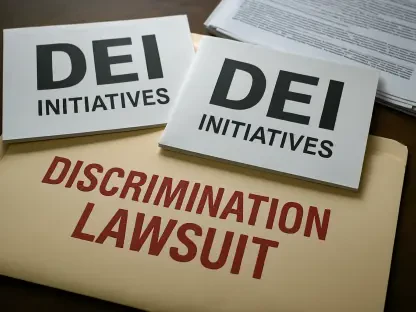In a recent landmark federal district court case in Louisiana, a governmental entity’s effort to evade liability as a joint employer in a discrimination and retaliation lawsuit resulted in a significant ruling. The legal battle, involving the New Orleans Police Department (NOPD) and the New Orleans Regional Transit Authority (RTA), has underscored the intricate nature of joint employment liability and the specific criteria that establish such relationships. The decision has pivotal ramifications for how governmental agencies handle employees borrowed from other entities, shedding light on the importance of employment practices and policies.
Background of the Case
Shandrell Privott, who had been diligently working with the NOPD since 2002, found herself entangled in a complex legal scenario after her assignment as the Transit Police Unit Commander for the RTA was terminated at the RTA’s request in March 2022. For more than two years, stretching from December 2019, Privott had served in her capacity at the RTA, before suddenly facing dismissal. Following her termination, Privott filed a lawsuit against both the RTA and the city of New Orleans, alleging violations under Title VII of the Civil Rights Act of 1964 as well as Louisiana state law. Her claims included sex discrimination and retaliation, rooted in accusations that her supervisor at the RTA subjected her to sexual harassment, and subsequently, the RTA retaliated by requesting the NOPD to end her assignment when she voiced her complaints.
The core issue central to Privott’s lawsuit was whether the RTA could realistically be considered her joint employer, despite her formal employment with the NOPD. This contention brought the criteria and nuances for determining joint employer liability into sharp focus. Privott argued that her working conditions and responsibilities were fundamentally shaped by her relationship and interactions with the RTA, thereby implicating the RTA as a joint employer. The RTA, on its part, strongly resisted this assertion and sought dismissal of the claims, arguing that legal precedents within the U.S. 5th Circuit Court of Appeals—jurisdictionally encompassing Texas, Louisiana, and Mississippi—did not support the notion of joint employer liability for governmental entities such as itself.
Legal Arguments and Court’s Examination
In defense of their stance, the RTA pointed to case law suggesting that governmental entities were not amenable to joint employer liability under the 5th Circuit Court’s jurisdiction. The RTA’s argument was predicated on the assumption that as a governmental entity, it should be immunized from such liabilities, contrasting with the notion of private sector joint employment dynamics. However, the court’s task was to sift through these intricate but pivotal legal distinctions and examine the substantiality of Privott’s claims to determine if a direct employment relationship with the RTA had indeed been established.
Privott presented a compelling array of factual allegations to substantiate her assertion of a direct employment relationship. Her claims included significant details; for instance, Privott received her daily instructions and task assignments directly from an RTA supervisor, performed her work at the RTA’s offices, used an RTA email account for official correspondence, and was even issued a vehicle by the RTA for her professional duties. Additionally, Privott’s hourly wage was paid by the RTA, and crucially, it was the RTA that requested the NOPD to terminate her assignment—a decisive factor that underscored the degree of control the RTA exerted over her professional responsibilities and conditions.
Court’s Decision and Reasoning
In light of these points, the court came to the determination that Privott had sufficiently alleged a direct employment relationship with the RTA. This was a critical juncture, as it allowed her claims to advance to trial, emphasizing the potential for governmental entities to be held accountable under joint employer liabilities, counter to the RTA’s assertions. The court scrutinized prior cases cited by the RTA but found that those examples predominantly involved employees directly employed by governmental entities who attempted to sue other entities higher up the administrative hierarchy, which contrasted starkly with Privott’s situation.
The 5th Circuit’s intention to restrict joint employer liability, according to the court, was designed to prevent scenarios where employees targeted superior governmental entities that did not directly employ them. However, in Privott’s case, such an interpretation could not serve to shield the RTA from liability, given the concrete and detailed allegations indicating a substantive employment relationship. The court’s reasoning was grounded in the logic that control and direct engagement by the RTA were evident to a degree sufficient to warrant examination of joint employer status.
Implications for Governmental Employers
The implications of this ruling extend beyond the immediate parties involved, casting a cautionary light on governmental employers who might consider invoking joint employer defenses in future analogous lawsuits. The court’s decision serves as a firm reminder that when allegations convincingly suggest a direct employment relationship, attempts to circumvent liability may falter. The crux of the matter lies in the control and influence exerted over the employment terms and conditions of workers, irrespective of their formal employer.
The court’s evaluation pointed to the essential need for governmental entities and employers who engage with or “borrow” employees from other organizations to adopt and enforce standard personnel policies and procedures. These policies must be comparable to those applied to permanent employees, effectively extending the same protections and standards to temporary or leased staff. This approach is pivotal in mitigating the risks associated with potential joint employer liability, ensuring compliance with employment laws, and fostering a fair working environment.
Broader Impact on Employment Practices
In a groundbreaking federal district court case in Louisiana, a governmental entity’s attempt to avoid liability as a joint employer in a discrimination and retaliation lawsuit led to a pivotal ruling. This legal dispute involved the New Orleans Police Department (NOPD) and the New Orleans Regional Transit Authority (RTA), highlighting the complex nature of joint employment liability and the specific criteria that define such relationships. The court’s decision holds significant implications for governmental agencies in managing employees borrowed from other entities. It underscores the critical importance of clearly defined employment practices and policies. This case brings to light the responsibility that government agencies bear when it comes to ensuring fair treatment and adhering to employment laws, especially when dealing with joint employment scenarios. The ruling serves as a reminder that governmental bodies must navigate employment relationships meticulously to avoid legal pitfalls and to maintain compliance with employment regulations.









